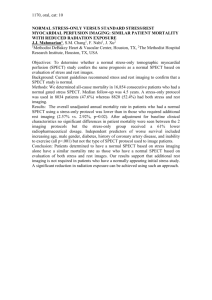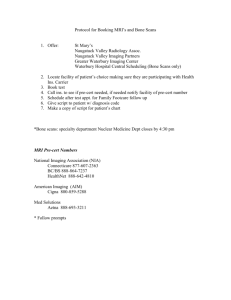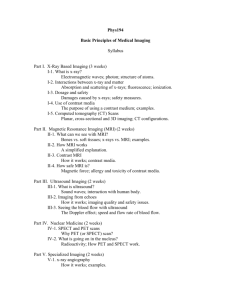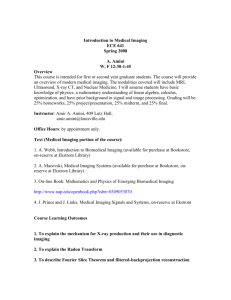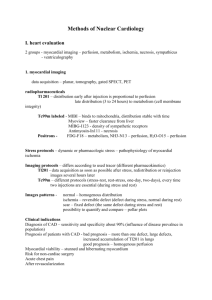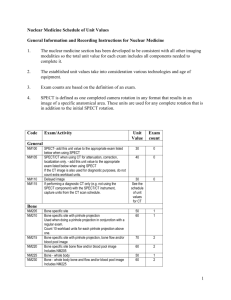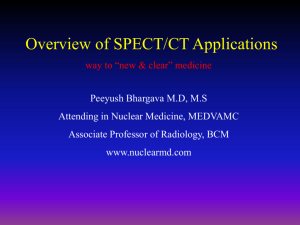doc
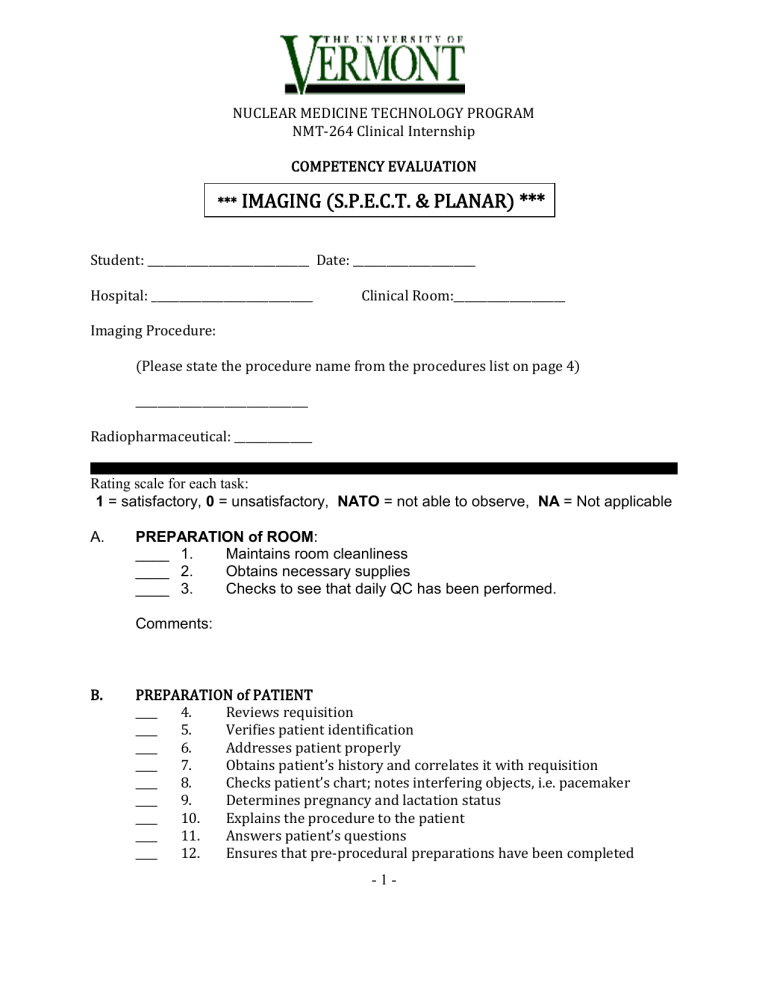
NUCLEAR MEDICINE TECHNOLOGY PROGRAM
NMT-264 Clinical Internship
COMPETENCY EVALUATION
***
IMAGING (S.P.E.C.T. & PLANAR) ***
Student: _____________________________ Date: ______________________
Hospital: _____________________________ Clinical Room:____________________
Imaging Procedure:
(Please state the procedure name from the procedures list on page 4)
_______________________________
Radiopharmaceutical: ______________
Rating scale for each task:
1 = satisfactory, 0 = unsatisfactory, NATO = not able to observe, NA = Not applicable
A. PREPARATION of ROOM :
____ 1. Maintains room cleanliness
____ 2. Obtains necessary supplies
____ 3. Checks to see that daily QC has been performed.
Comments:
B. PREPARATION of PATIENT
____ 4. Reviews requisition
____ 5.
____ 6.
Verifies patient identification
Addresses patient properly
____ 7.
____ 8.
Obtains patient’s history and correlates it with requisition
Checks patient’s chart; notes interfering objects, i.e. pacemaker
____ 9. Determines pregnancy and lactation status
____ 10. Explains the procedure to the patient
____ 11. Answers patient’s questions
____ 12. Ensures that pre-procedural preparations have been completed
- 1 -
____ 13. Is the informed consent form signed?
____ 14 Explains the procedure to the family
____ 15. Injects radiopharmaceutical
____ 16. Attends to the needs of the patient, i.e. bed-pan, etc.
Comments:
C. POSITIONING of the PATIENT
____ 17. Takes action for patient = s modesty
____ 18. Assists the patient to the imaging table.
____ 19. Checks for and removes interfering objects, i.e. jewelry, belt buckles
____ 20. Positions patient correctly
____ 21. applies appropriate landmarks
____ 22. Uses supports or sponges as necessary
____ 23. applies EKG leads
____ 24. Uses immobilization when necessary
____ 25. Is aware of IV lines, Oxygen, etc. when positioning patient
____ 26. applies modifications in accordance with patient condition
Comments:
D. GAMMA CAMERA SETUP
____ 27. sets up camera using standard operating procedures
____ 28. selects appropriate collimator
____ 29. attentive to the movement of the camera in relation to the patient
____ 30. Adjust controls for each procedure
____ 31. Centers the organ to the camera
____ 32. Demonstrates ability to use instruments for administering and containing radioactive gases
Comments:
E. COMPUTER SETUP
____ 33. Retrieves the proper software program for the procedure
____ 34. Uses correct procedure for entering data
____ 35. processes collection data
____ 36. Obtains hard copy for interpretation by physician
____ 37. processes images for physician review
Comments:
- 2 -
F.
COMPLETE THE PROCEDURE
____ 38. Begins procedure the appropriate time after injection
____ 39. Obtains all the necessary images (both routine and additional)
____ 40. Properly develops the film
____ 41. Checks the quality of the film
____ 42. Completes necessary paperwork.
____ 43. discharges the patient
____ 44. readies the room for the next patient
____ 45. recognizes artifacts on film
____ 46. acquires additional views
____ 47. Repeats films when necessary with proper modifications
Comments:
G.
EMERGENCY
____ 48. initiates call for assistance
____ 49. applies CPR
Comments:
Passed: _____ Failed: _____
General Comments:
Signed:
Supervising Technologist: _________________________ Date: ___________
Student Coordinator: __________________________ Date: ___________
Student ______________________________________ Date: ___________
UVM Program Director: __________________________ Date: ___________
Titles of SPECT & PLANAR IMAGING Procedure from NMTCB
- 3 -
1. Bone / Musculoskeletal a. Bone Scan, limited, planar b. Bone scan; whole body, planar c. Bone scan; SPECT d. Bone scan; 2-phase e. Bone Scan; 3-phase f. Bone scan; 4-phase g. ***Bone Densitometry
2.
Cardiovascular a. Myocardial perfusion; planar b. Myocardial perfusion; SPECT c. Myocardial perfusion; gated SPECT d. Cardiac First pass for EF and wall motion e. Cardiac blood pool; rest, gated f. Cardiac blood pool: stress, gated g. Cardiac blood pool; SPECT, gated
h. Venogram / thrombus localization
i. Cardiac Shunt
3.
Central Nervous System a. brain flow b. brain imaging, planar c. brain imaging, SPECT d. cisternogram e. CSF leak f. CSF Shunt Patency
4.
5.
6.
a. Bone Marrow Imaging
b. Spleen Scan
6.
Hematopoietic
Infection a. Gallium infection imaging b. Tagged WBC imaging
c. antibody imaging
Endocrine a. Thyroid imaging b. whole body scan) c. Parathyroid imaging d. Adrenal imaging e. whole body scan for metastases
7. Oncology a, Gallium tumor imaging, planar b. Gallium tumor imaging, SPECT c. Monoclonal Antibody imaging d. Peptide Imaging e. Breast Imaging f. Lymphoscintigraphy / sentinel node
localization g. *** Octreoscan
8.
Pulmonary a. radioaerosal ventillation b. Xenon ventillation c. Perfusion d. Perfusion/Ventillation Quantitation
Gastrointestinal 9. Renal / Genitourinary a. Esophageal motility / transit b. Gastric Emptying c. Gastroesophageal Reflux d. GI Bleed e. Gall Bladder Ejection Fraction f. LeVeen shunt patency g. Hemangioma h. Hepatic pump patency i. Hepatobiliary (GB) j. Liver/spleen imaging; planar k. Liver-spleen imaging: SPECT l. Meckel’s Diverticulum m. Salivary (parotid)
*** these procedures are not yet listed by the NMTCB. a. Renal anatomy, planar b. Renal anatomy, SPECT c. Renal flow
d. renogram
e. cystogram / direct
Version: 6/9/2006
4
